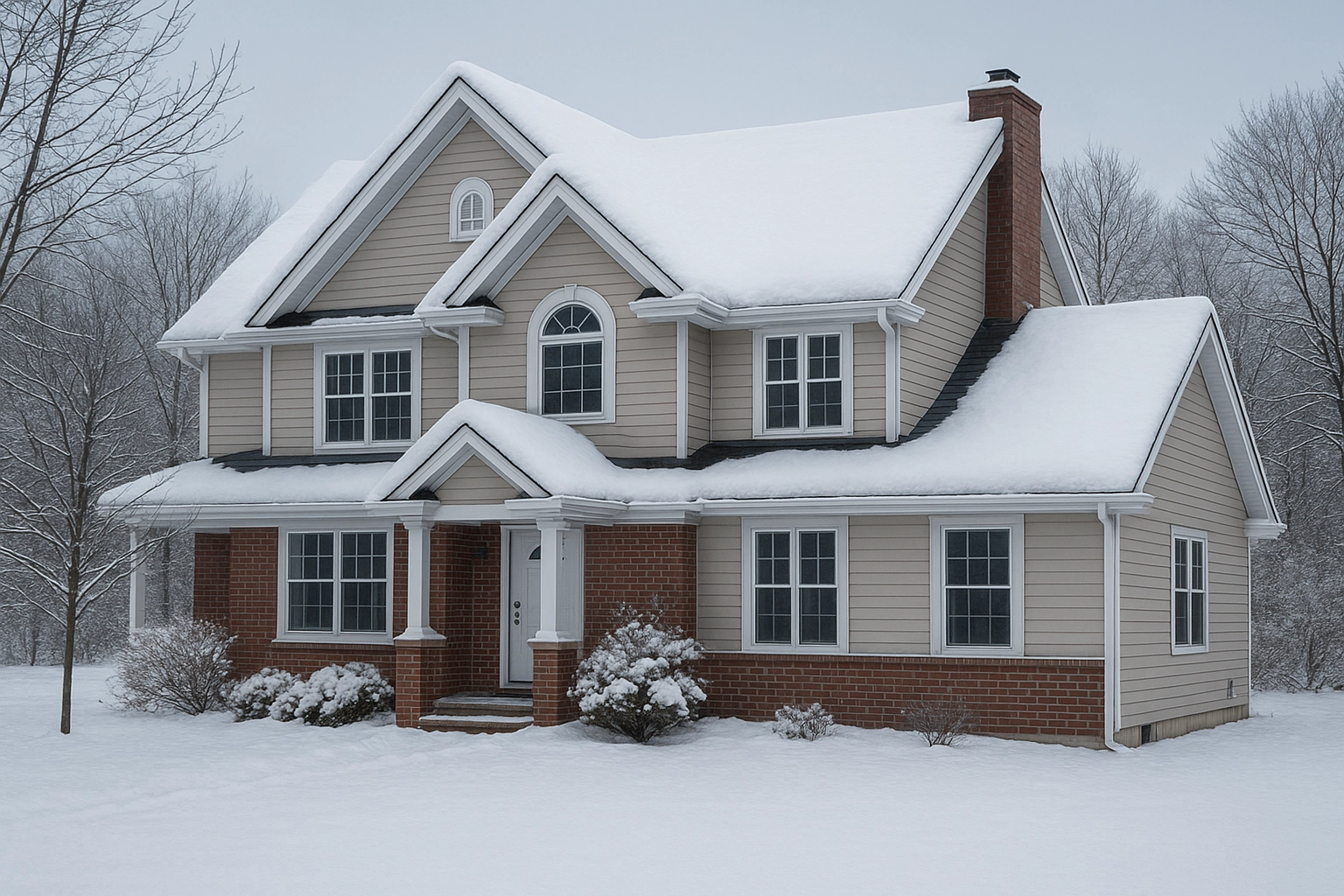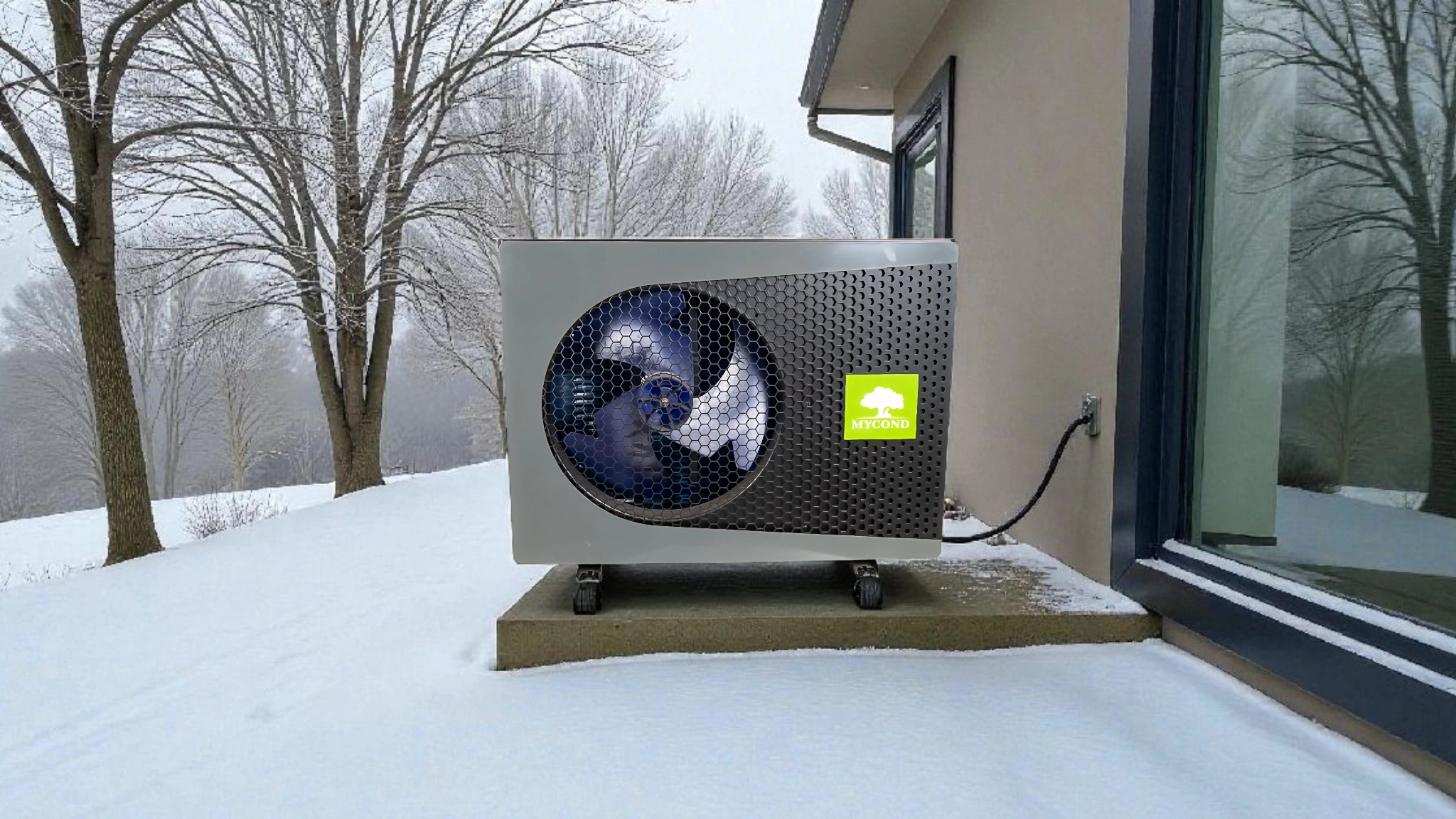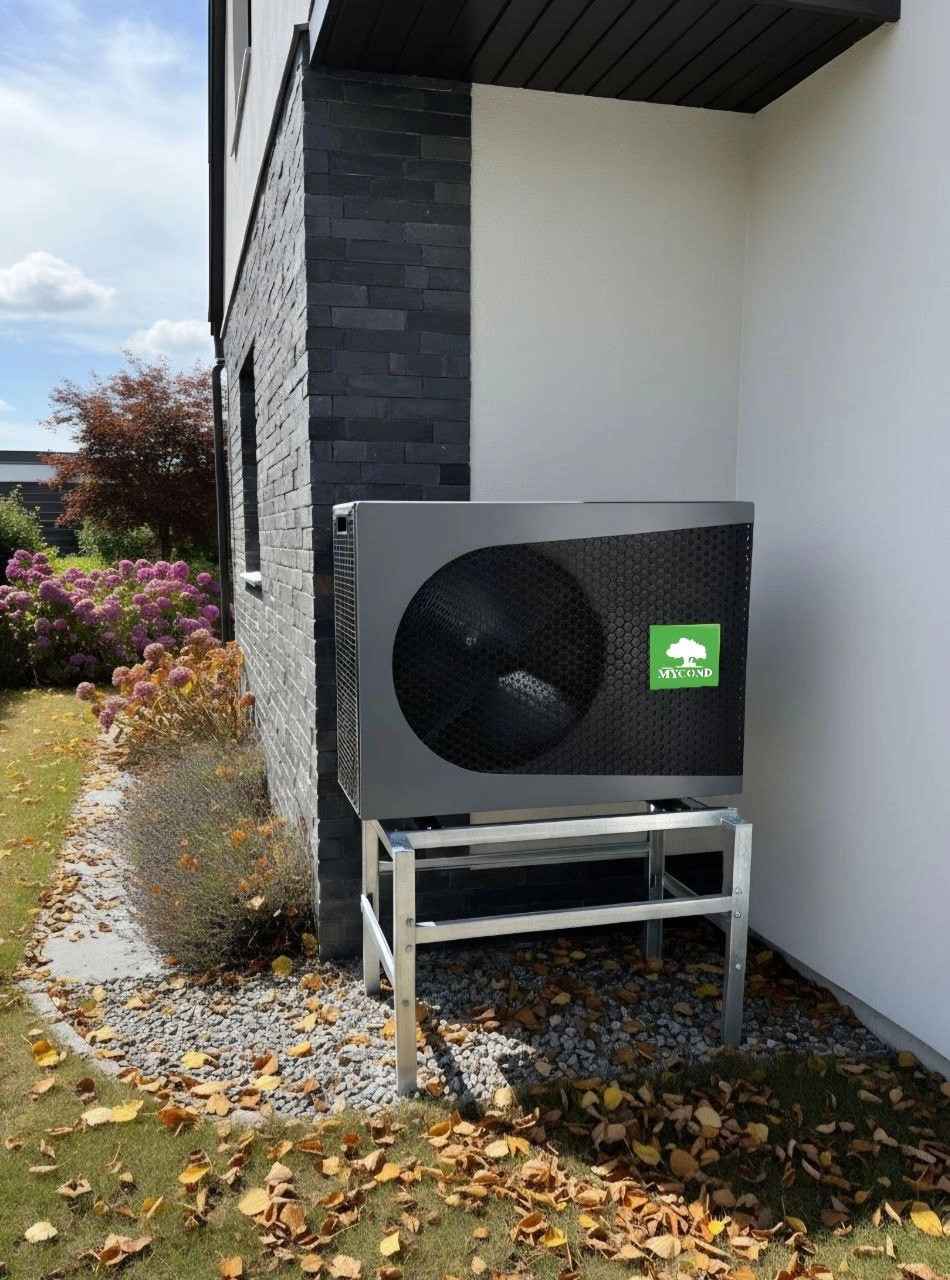
A typical mistake among heat pump buyers is focusing solely on the floor area when selecting a heating system. “For a 200 m² house you need an X kW heat pump” — this statement is fundamentally incorrect. In reality, two houses with the same area can have heat losses that differ by up to three times, depending on insulation quality, year of construction, and design features.
Why is this critically important? An incorrectly selected heat pump will either result in insufficient heating and discomfort, or in unnecessary spending on equipment and electricity due to oversizing. The key parameter when selecting a heat pump is not the floor area, but the building’s heat losses.

European heat loss standards: a realistic basis for calculation
According to European energy efficiency standards, the heat losses of different types of houses are as follows:
- New energy-efficient houses: 30–50 W/m²
- Renovated (retrofitted) houses: 50–70 W/m²
- Old houses without insulation: 100–150 W/m²
Let’s calculate heat losses for a 200 m² house in each of these cases:
- Energy-efficient new build: 200 m² × 40 W/m² = 8000 W = 8 kW
- Renovated house: 200 m² × 60 W/m² = 12000 W = 12 kW
- Old house without insulation: 200 m² × 120 W/m² = 24000 W = 24 kW
These calculations show that for the same 200 m² house, depending on insulation level, you may need a heat pump with a capacity ranging from 8 to 24 kW, or even a bivalent system with an additional heat source.
Operating principle of an air-to-water heat pump and the importance of COP
An air-to-water heat pump “pumps” heat energy from the outdoor air into the building’s heating system. The key efficiency metric is the Coefficient of Performance (COP).
COP shows the ratio between the delivered heat energy and the electrical energy consumed. For example, at a COP of 4, for every 1 kW of electricity consumed the system produces 4 kW of heat. It’s critical to understand that COP is not a constant value:
- COP decreases as the outdoor air temperature drops (less heat can be extracted from colder air)
- COP decreases as the supply temperature of the heat carrier increases (higher temperature requires more energy)
That’s why datasheets indicate different COP values for different conditions; for example, “A7W35” means outdoor air temperature +7°C and supply water temperature 35°C.

Panasonic EVI technology: a revolution in efficiency
The innovative EVI (Enhanced Vapor Injection) technology in Panasonic compressors, which equip BeeThermic heat pumps, ensures stable and efficient operation even at extremely low temperatures down to -25°C. Operating principle:
- Additional vapor injection of the refrigerant at an intermediate point of the compression cycle
- Improved energy efficiency and output at low temperatures
- Lower compressor operating temperature, extending its service life
- Stable operation in harsh climatic conditions
This technology is the main competitive advantage of BeeThermic heat pumps, allowing high COP values even under low outdoor temperatures.
BeeThermic heat pump lineup: technical specifications
To correctly select a heat pump for a 200 m² house, you need to consider not only the area but also the heat losses. Below are the specifications of the BeeThermic lineup:
| Model | Heating capacity (A7W35), kW | COP at +7°C W35 | COP at -10°C W35 | COP at +7°C W55 | COP at -10°C W55 | Sound level, dBA | Voltage | Energy efficiency class |
|---|---|---|---|---|---|---|---|---|
| MHCM 06 SU1A | 6.46 | 4.93 | 3.42 | 3.17 | 2.27 | 63 | 230 V | A+++ |
| MHCM 10 SU1A | 10.58 | 4.62 | 3.21 | 3.12 | 2.24 | 66 | 400 V | A+++ |
| MHCM 14 SU3A | 14.58 | 4.60 | 3.19 | 3.03 | 2.17 | 68 | 400 V | A+++ |
| MHCM 18 SU3A | 18.77 | 4.51 | 3.13 | 2.97 | 2.13 | 70 | 400 V | A+++ |
| MHCM 24 SU3A | 23.98 | 4.34 | 3.02 | 3.08 | 2.14 | 71 | 400 V | A+++ |
All BeeThermic models are equipped with a reliable Panasonic compressor featuring innovative EVI technology, run on the eco-friendly refrigerant R32, and have a monoblock design with a built-in hydronic module (circulation pump, expansion vessel, protection system). The maximum supply temperature is +55°C (W55 mode), which is suitable for most radiator heating systems and underfloor heating.
The wide lineup from 6 to 24 kW allows you to choose the optimal solution for any type of house — from energy-efficient new builds to older buildings that require heating system modernization.
Practical sizing scenarios for a 200 m² house
Scenario 1: New energy-efficient house
Parameters: heat losses 40 W/m², total heat losses 8 kW
Recommended model: MHCM 10 SU1A (10.58 kW)
Justification: The MHCM 10 SU1A model provides the necessary power reserve (~25%), which is optimal for new energy-efficient houses. With a COP of 4.62 (A7W35), the system consumes only ~2.3 kW of electricity to generate 10.58 kW of heat. Even at -10°C, the COP remains high (3.21), ensuring efficient heating during winter.
Scenario 2: Renovated house
Parameters: heat losses 60 W/m², total heat losses 12 kW
Recommended model: MHCM 14 SU3A (14.58 kW)
Justification: For a renovated house with 12 kW of heat losses, the MHCM 14 SU3A is the optimal choice, providing the required power reserve and a balanced trade-off between capacity and efficiency. EVI technology ensures stable operation throughout the heating season, even at temperatures below -15°C.
Scenario 3: Old house without insulation
Parameters: heat losses 120 W/m², total heat losses 24 kW
Option 1: MHCM 24 SU3A (23.98 kW) as a standalone solution
Option 2: Bivalent setup with MHCM 18 SU3A (18.77 kW) + backup boiler
Justification: For an old uninsulated house, there are two options. The first is to install the MHCM 24 SU3A heat pump as the sole heat source, which is optimal in milder winters. The second is a bivalent setup with the MHCM 18 SU3A and a backup electric or gas boiler that switches on only at extremely low temperatures.
The bivalence point is the outdoor temperature at which the heat pump’s output is no longer sufficient to cover all heat losses, and a backup heat source is activated. For a moderate climate, the bivalence point is usually set between -7...-12°C, allowing the heat pump to cover 85–95% of the annual heating demand.

Key advantages of BeeThermic heat pumps
- Panasonic compressor with EVI technology: delivers reliability, efficiency, and stable operation down to -25°C
- Monoblock design: simplifies installation and reduces installation cost
- Wide supply temperature range (W35–W55): enables operation with different types of heating systems
- Energy efficiency class A+++: confirmed by European Heat Pump Keymark certification
- Low noise level (63–71 dBA): ensures comfortable operation
- Eco-friendly refrigerant R32: reduces environmental impact
Installation, operation, and economics of BeeThermic heat pumps
Advantages of the monoblock design
BeeThermic heat pumps have a monoblock design where all components are located in a single unit. This significantly simplifies installation: no refrigerant lines are required between units, and the built-in hydronic module components (circulation pump, expansion vessel, safety system) shorten installation time and reduce the risk of errors.
Compatibility with existing heating systems
BeeThermic heat pumps are compatible with radiators, fan coils, and underfloor heating thanks to their ability to operate in W35, W45, and W55 modes. This makes them an ideal solution for upgrading old heating systems without the need to completely replace indoor equipment.

Real savings on heating
The economic efficiency of a BeeThermic heat pump is based on its high COP. At an average COP of 4, only 1 kW of electricity is needed to obtain 4 kW of heat. Compared to an electric boiler, this yields 75% savings. Compared to a gas boiler, the economics depend on current gas and electricity prices, but in most European countries a heat pump provides greater long-term savings.
Frequently Asked Questions (FAQ)
Is 10 kW enough for a 200 m² house?
It depends on heat losses, not floor area. For an energy-efficient house with heat losses of 40 W/m² (8 kW total), a 10 kW heat pump will be sufficient and even have a reserve. For an old uninsulated house with heat losses of 120 W/m² (24 kW), this capacity will be insufficient.
Does the BeeThermic heat pump work in winter at -20°C?
Yes, thanks to Panasonic’s EVI technology, BeeThermic heat pumps operate efficiently down to -25°C. Although the COP decreases at extremely low temperatures, the system maintains stable performance even under such conditions.
Can BeeThermic be connected to old radiators?
Yes, the maximum supply temperature of +55°C (W55 mode) is suitable for most radiator systems, including medium-temperature radiators. Very old high-temperature systems may require modernization or a bivalent setup.
What is the bivalence point?
The bivalence point is the outdoor temperature at which the heat pump’s capacity becomes insufficient to cover heat losses, and a backup heat source is automatically activated. Bivalent setups are particularly advisable for old houses with high heat losses or regions with prolonged severe frosts.
How much electricity does a BeeThermic heat pump consume?
At a COP of 4, 2.5 kW of electricity is needed to obtain 10 kW of heat. For example, the MHCM 10 SU1A model at a COP of 4.62 (A7W35) consumes ~2.3 kW to produce 10.58 kW of heat. At low temperatures (-10°C) and a COP of 3.21, consumption rises to ~3.3 kW.
Is a backup boiler required with BeeThermic?
It depends on the building’s heat losses and the climate zone. For well-insulated houses with heat losses up to 50 W/m², a backup source is not needed. For older houses or regions with prolonged frosts below -20°C, a bivalent setup can be economically justified.
How to determine your home’s heat losses?
You can use a simplified estimate by standards: 30–50 W/m² for new houses, 50–70 W/m² for renovated ones, 100–150 W/m² for old houses. For an accurate calculation, it’s best to order a professional thermal audit.
Conclusion: heat losses, not floor area — the key to a correct choice
Selecting a heat pump based solely on a home’s floor area is a common but critical mistake. The main criterion is heat losses, which depend on insulation quality, building age, and design features. For a 200 m² house, depending on the level of energy efficiency, you may need a heat pump with a capacity from 8 to 24 kW.
BeeThermic heat pumps from Mycond are an optimal solution for different types of houses thanks to a wide lineup from 6 to 24 kW. A Panasonic compressor with innovative EVI technology ensures reliability, efficiency, and stable operation even at -25°C. The monoblock design simplifies installation and integration with existing heating systems, and the A+++ energy efficiency class, confirmed by European Heat Pump Keymark certification, guarantees minimal operating costs.
Mycond is a leader in its segment, offering comprehensive, modern, and energy-efficient solutions for indoor climate control without overpaying for global brands, while ensuring high equipment quality and reliability.
For professional advice on selecting a BeeThermic heat pump for a specific project, considering heat losses, climate zone, and heating system features, contact us by phone or fill out the form at the bottom of the page.